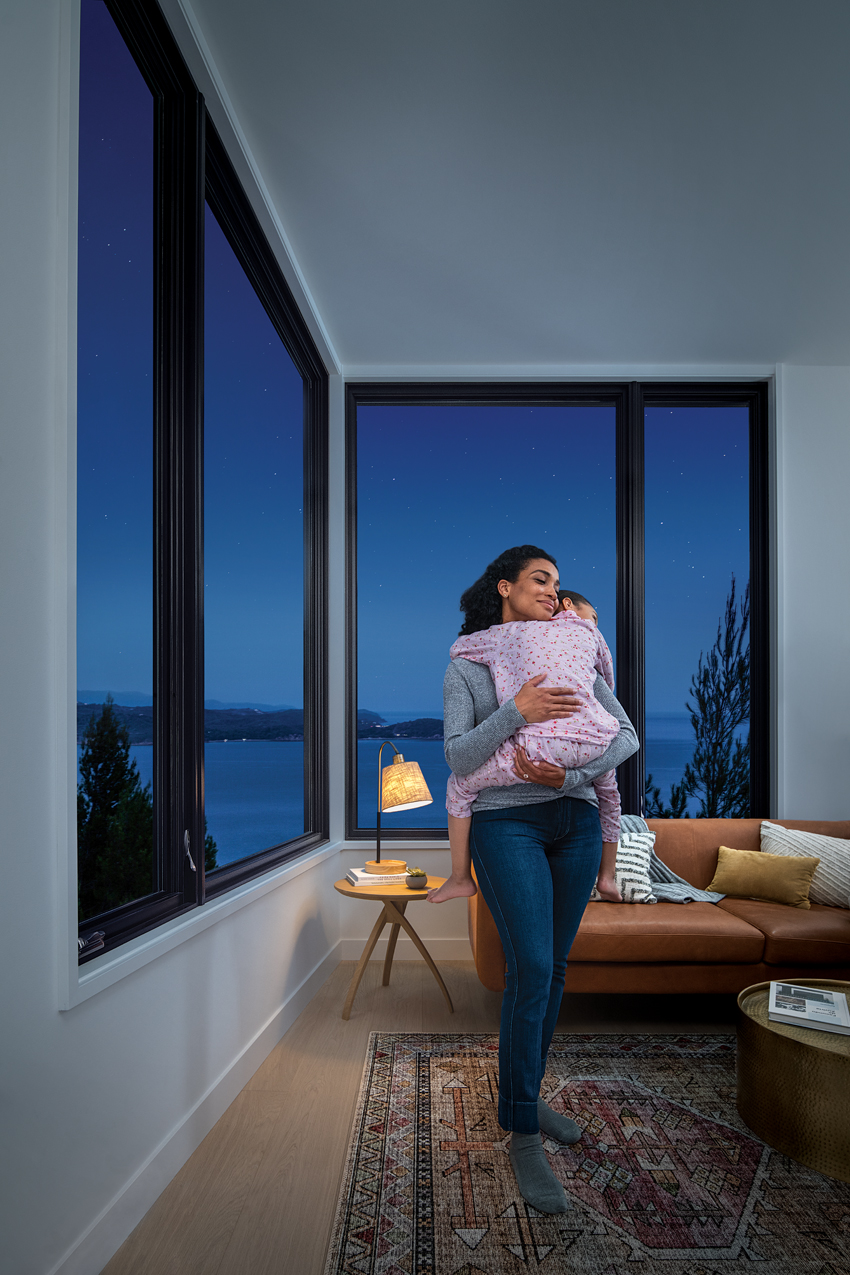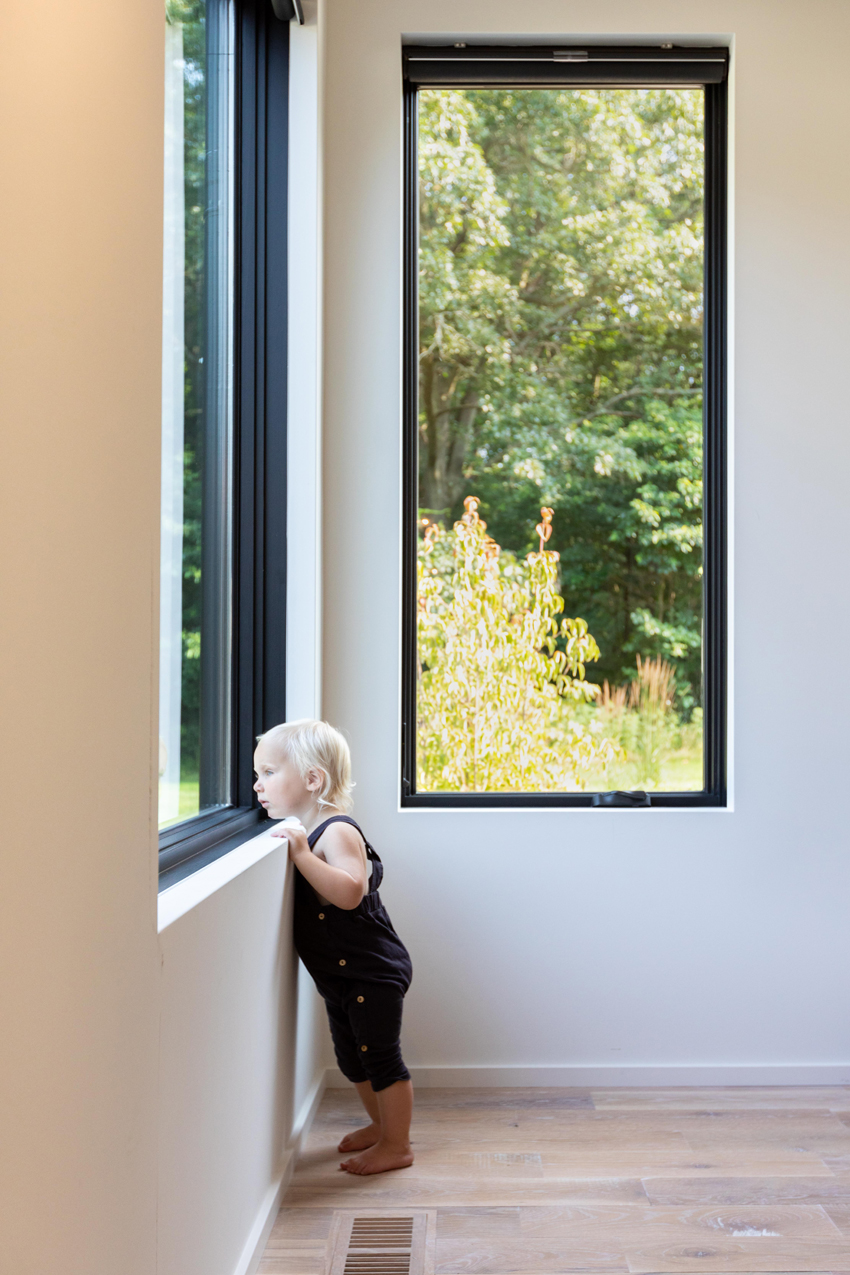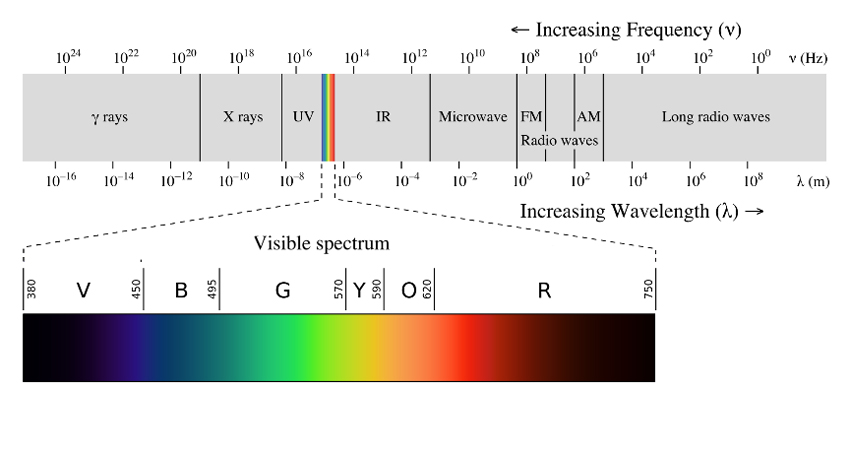Circadian rhythms regulate body processes and contribute to overall health. They are in part reliant on cues from the natural environment, particularly cycles of daylight and darkness. However, modern lifestyles and the built environment can interrupt these natural cycles by either introducing too much artificial light at the wrong time or depriving people of sunlight.
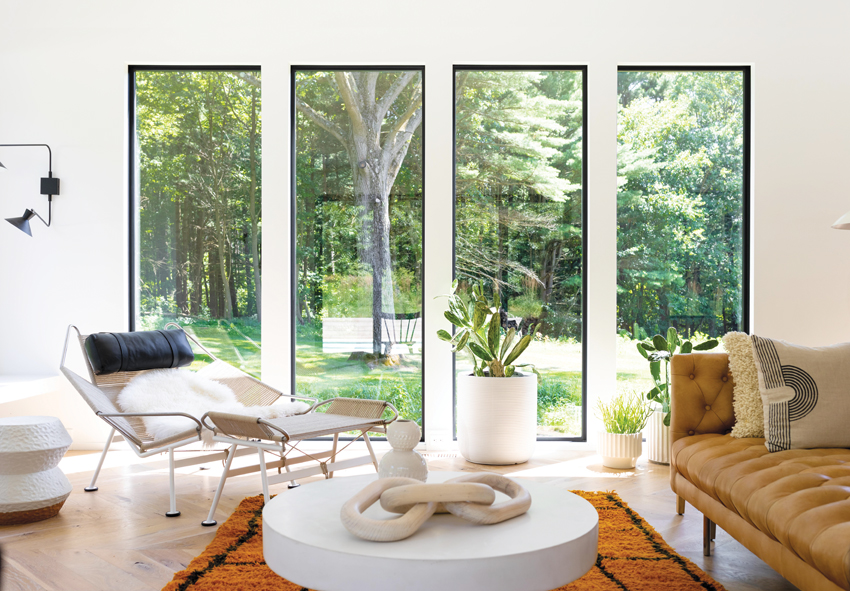
Photo: 22 Waves Creative
Exposure to natural light is essential for human health and well-being.
Designers can help ensure that occupants of both residential and commercial buildings have access to natural light throughout the day. That said, sometimes there is simply not enough natural light available; in these cases, research is showing that artificial lighting can play a role by mimicking natural sunlight. This course will describe the latest trends in fenestration that combine both high-performance glass and tunable LED lighting to help create indoor environments that promote health and well-being.
Circadian Rhythms and Natural Light
Circadian rhythms are physical, mental, and behavioral changes that follow a daily cycle. These cycles are set by a “master clock” in the brain and respond primarily to light and darkness in an organism's environment.
Most living creatures, from whales to plants to bacteria, have some sort of master clock. In mammals, it is called the suprachiasmatic nucleus. Located in the hypothalamus of the brain, this group of cells helps regulate many of our daily cycles, including sleeping, eating, and hormone fluctuations.
The clock is generated internally, but it relies on signals from the external environment to synchronize it. Light is the primary cue governing our sleep and wake cycles.
The circadian cycle is close to but not precisely 24 hours; consequently, the biological clock must be reset every day to sync with the earth’s rotation and periods of day and night. The amount and quality of light exposure depends on geographic location, a person’s immediate environment, and a person's behavior. In addition, every individual person’s biological clock (and sensitivity) is slightly different.1
You likely recall that the eye contains special receptors called rods and cones, which enable us to detect light and color. The retina also contains a third type of photo-sensitive cell that is directly tied to the master clock. These cells are most sensitive to short wavelengths in the blue region of the light spectrum.
When light enters the eye, these receptors send neurological signals to the suprachiasmatic nucleus, or SCN, via the optic nerve. The SCN communicates information about light and dark to the pineal gland. Located deep within the brain in a region called the epithalamus, the pineal gland is primarily responsible for the production of melatonin.
Melatonin can be thought of as the “sleep hormone,” as it helps regulate cycles of sleep and wakefulness. When light is present, the SCN sends a signal to the pineal gland that interrupts melatonin production. When light is absent, the SCN secretes a substance called glutamate, which triggers a series of actions that result in melatonin production.
Production of melatonin ramps up after the sun goes down, and levels remain elevated throughout the night. Production drops off as soon as the sun comes up and morning light hits the retina.
The SCN also sends signals to other parts of the brain to regulate body temperature and the production of other hormones, including cortisol. Sometimes called the “stress hormone,” cortisol is correlated with alertness or wakefulness, while melatonin levels correlate with feelings of sleepiness. Hence, when melatonin levels peak at night, body temperature and cortisol levels are low; conversely, when body temperature and cortisol levels rise in the morning, melatonin levels dip.2
Melatonin levels also wax and wane on a seasonal basis. As day length increases in spring and summer, levels fall; in fall and winter, with the lengthening nights, melatonin levels increase.
Once melatonin is secreted from the pineal gland, it travels through the bloodstream (and via fluid surrounding the brain and spinal cord) to various tissues throughout the body. Melatonin receptors are not only found in many areas of the brain but also in the cells of the immune system, gonads, kidney, and cardiovascular system.
Melatonin helps synchronize the circadian rhythms with the environment and the body. In addition to regulating metabolism and sleep patterns, the circadian system influences important functions such as heart rate, blood pressure, body temperature, hormone levels, and urine production.3
Because of its role in regulating sleep, melatonin can be used to treat sleep disorders and reset the biological clock after a major disruption, such as an overseas flight.
Melatonin has been linked to cardiovascular health; it is also an antioxidant, which “scavenges” free radicals and protects other cell products from damage. Melatonin has even been shown to help fight cancerous tumors at the cellular level.
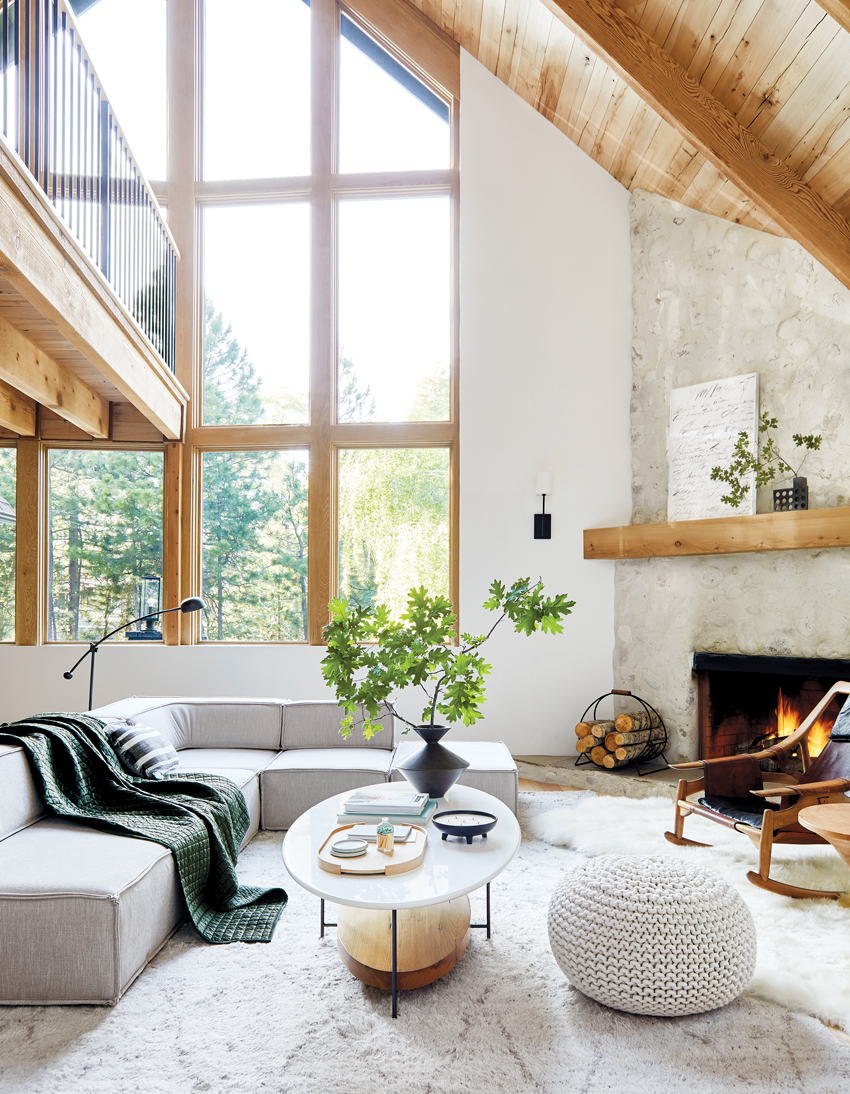
Photo: Sara Tramp
Exposure to daylight at the right times can promote both wakefulness during the day and quality sleep at night.
Natural light, Vitamin D, and Seasonal Affective Disorder (SAD)
Natural light is key to regulating the production of melatonin. It also plays a role in mood and health by catalyzing chemical reactions, including the production of vitamin D.
People obtain vitamin D either through food or when ultraviolet rays activate a vitamin D precursor under the skin. The effectiveness of sunlight on metabolizing vitamin D depends on the length of exposure, season, latitude, and the person’s race.4
Inadequate levels of vitamin D may contribute to disorders and diseases such as cancer, osteoporosis, cardiovascular disease, and diabetes; in addition, vitamin D deficiency may play a role in depression and other mood disorders, including seasonal affective disorder, or SAD.
SAD is a mood disorder linked to shortened daylength. People with SAD experience lethargy, irritability, depression, weight gain, and other unpleasant symptoms, which usually dissipate with lengthening days in spring. People with SAD often have low levels of vitamin D, and light therapy can help alleviate the symptoms.
When it comes to vitamin D production, the body responds more strongly to daylight than to artificial lighting. Daylight includes the full spectrum of wavelengths; by contrast, artificial lighting typically does not include shorter wavelengths.
The Toll of Modern Life on Our Circadian Cycles
Not so long ago, human activity was dictated by the sunrise and sunset. While people have long used fire and fuel lamps to extend productivity before and after dark, it was not until the advent and spread of electric lighting that we seriously began to subvert the natural cycles of day and night.
Modern lifestyles and artificial lighting can potentially disrupt the body’s normal rhythms, particularly sleep cycles, with negative consequences to health and well-being.
Shift work has become commonplace. Though it was adopted first in the manufacturing sector, the service industry has come to rely on shift workers, as restaurants, fast food chains, and even fitness centers expand their hours, with some open 24 hours a day.
According to the Bureau of Labor, about 15 percent of full-time wage and salary workers in the United States work shifts outside the traditional daytime schedule. Most shift workers are in service jobs and include firefighters and police officers, cooks and servers, health-care workers, and truck drivers.5
At least a quarter of these shift workers experience symptoms of “shift work disorder”—for example, excessive sleepiness and/or insomnia—and shift work can impact safety and performance as well as physical and mental health.
Shift work is hard on people because the body and the person’s environment are sending conflicting signals. The master clock, responding to ambient light levels, signals the body to be alert during the day, when this is the time a night shift worker must sleep. Similarly, the body’s clock sends signals at night that it is time to sleep—exactly the wrong message a shift worker needs to stay alert on the job.
In 2019, the International Agency for Research on Cancer (IARC) concluded that night shift work that involves circadian disruption is “probably carcinogenic to humans, based on studies involving both animals and humans.6 Despite this, it should be noted that currently there is no clear consensus on the link between night shift work and cancer. While some studies, such as one conducted in Poland from 2015 to 2019, showed a significant increase in the risk of breast cancer among night shift workers, others, including a 10-year study involving more than 100,000 women in the United Kingdom, showed no link at all.7, 8
Bright Skies at Night
Shift workers are not the only people who experience circadian disruption. Our skies are no longer dark at night. With the plethora of streetlights, signs, billboards, security, and porch lights, it is often impossible to escape light pollution. In fact, more than 80 percent of the world’s population lives under skies that are nearly 10 percent brighter than they would be normally. The problem is worse in industrialized countries, with 99 percent of Europeans and Americans living under light-polluted skies.
Much artificial lighting has been converted to fluorescent lamps and/or light-emitting diodes, or LEDs. While this is certainly good news for improving energy efficiency, both emit a high percentage of blue light.
In addition, most of us spend hours in front of screens, which also emit short-wave blue light. While light of any kind can suppress the secretion of melatonin, blue light at night does so more powerfully. Exposure to this type of light at the wrong time—say, right before bedtime—can slow or even prevent melatonin production and prevent us from getting a good night’s sleep.
In one study, participants who read from eBooks and other light-emitting devices right before bed took longer to fall asleep than those who read traditional printed books. These people also had reduced melatonin secretion, and the timing of their circadian clocks shifted forward, causing them to be less alert the next morning.9 Even more troubling, studies have linked hormone-dependent cancers to exposure to light in the blue spectrum at night.10
A Dearth of Daylight
Ironically, many people suffer from the opposite problem: not enough exposure to natural light during the day.
Exposure to high-intensity blue light is key for regulating circadian rhythms; however, people are spending more and more time indoors, many in buildings without adequate daylighting. According to the U.S. Environmental Protection Agency (EPA), people spend 90 percent of their time indoors. If this time is spent in buildings with inadequate daylighting, it could be enough to disrupt circadian rhythms and impact the quality of sleep. Fortunately, there are many ways to bring natural light into buildings, to the great benefit of building occupants.
Glass, Daylighting, and Well-Being
There are several key reasons to promote daylighting in buildings. First, daylighting reduces the need for artificial lighting and makes buildings more energy efficient. Second, daylighting is a biophilic design strategy that connects building occupants to aspects of the natural world, including fresh air, sunlight, and views of the outside. Daylighting can promote social interactions and help create feelings of well-being in building occupants. Finally, exposure to daylight supports our circadian rhythms and, by extension, the physiological processes that are vital to good health.
Many studies have quantified and documented the positive impacts of daylighting on the health and well-being of building occupants. Daylighting can promote employee productivity, help reduce absenteeism, and even boost retail sales. In health-care settings, daylighting and views of nature may aid in healing and reduce reliance on certain medications. The role of daylight and artificial light in supporting circadian rhythms is a newer field of research, but an exciting one.
Designers can create spaces that ensure occupants are exposed to natural light throughout the day, whether through the placement of windows, skylights, and/or through open plans that ensure all occupants have access to natural light. Equally important, glass and shading options can also help balance the need for natural light with control of solar gain and glare.
Though many daylighting strategies will support all of the goals mentioned in the previous section—energy efficiency, occupant well-being, biophilic connections, and circadian system regulation—it is important to understand that some design features will only address one or two of these goals, and that special strategies might be required to promote “circadian lighting.”
Although people are exposed to lights of all kinds throughout the day and night, most of this light exposure is in the form of electric lighting. Studies have shown that the light needed to stimulate the human circadian system is at least 10,000 times greater than the amount needed to support visual tasks. If a person is almost never exposed to natural light, they may not receive sufficient light stimulation to support normal circadian functions.
The circadian system is extremely sensitive to short-wavelength, or blue, light, while the visual system is most sensitive to longer wavelengths.16 Consequently, lighting design may be adequate for supporting visual tasks—it may reduce reliance on electric lighting and even promote well-being of occupants—but it may not have the intensity or spectral qualities that beneficially impact the circadian system.
Now let’s look at some tried-and-true strategies for effective daylighting.
Windows, Light Shelves, and Skylights
The primary way to introduce light into a space is through windows, skylights, and light shelves. In general, people gravitate toward spaces that are lit from more than one side, as this scheme is apt to feel more “natural.” It may also reduce glare.
Glare is caused when there is a significant difference between the surface an occupant is trying to view—a computer screen, for example—and the sunlight coming through a window. Glare can cause the eye to work hard to adjust, resulting in fatigue and eyestrain.
Ideally, brightness levels should be kept relatively even across the occupant’s field of vision within a space. The Illuminating Engineering Society (IES) recommends that small patches of sunlight be controlled to less than 79 candelas per square foot. The location of openings and use of awnings and overhangs can help control glare and radiation, as can the use of controls such as internal or external shading.
Electrified glazing that harnesses the power of the sun represents an exciting development in solar control. These “smart windows” are tinted with solar cells made from crystals called perovskites. These cells respond to temperature changes; as the window surface warms, they become more opaque and the perovskites absorb sunlight and convert it into electricity; as the temperature cools, the window becomes clear, allowing in more sun.17
Although architects and designers understand the appeal of a view-framing “window wall,” they must always be aware of the dynamic relationship between glazing, building orientation, daylighting, and solar gain.
Attention must be paid to both the locations of windows and the total area of windows and/or skylights. In general, south-facing windows bring in ample winter sunlight but, because the sun is more directly overhead during summer, little direct sunlight enters those same windows in that season, especially with proper shading. North-facing windows admit relatively even, natural light, producing little glare and almost no unwanted summer heat gain. While east- and west-facing windows facilitate daylighting in the morning and evening, respectively, they may cause glare and unwanted solar gain in summer. Consequently, shading is essential for these windows.
Window Area or Window-To-Wall Ratio (WWR)
Window area or window-to-wall ratio (WWR) is another important aspect of the building envelope that will not only impact daylighting but also ventilation, heating, cooling, and artificial lighting. The WWR is defined as the ratio of the total glazed area to the total exterior wall area. Although building codes set prescriptive maximums for the WWR, projects can exceed this maximum by using high-performance glazing systems.
Light Shelves
A light shelf is a horizontal projection installed onto the interior of a window opening, which redirect and redistribute natural light into the interior space. They are typically installed toward the head of a window, or between a window and a transom or clerestory. The top surface is usually bright white, to encourage reflection.
Light shelves are most effective on south-facing windows. As a rule of thumb, a light shelf will bounce light a distance of roughly two and a half times the height of the glazing above it.18
Skylights
Skylights can help create lofty and inspiring spaces. In fact, one study of retail chains in California showed that 49 stores that were retrofitted with skylights saw sales increase by 40 percent.19 Terrapin Bright Green estimates that, in general, skylights statistically increase sales by $1.55 per square foot in grocery stores, clothing outlets, and retail chains across the country.
Skylights are a particularly effective source of daylight because they bring in light from the brightest part of the sky into spaces not reached by perimeter windows. Skylights funnel light directly from the sun in addition to capturing light reflected from clouds and other surfaces.
In addition, skylights do not often cause glare because they are high above the occupant’s visual field. Skylights can drastically reduce electric lighting energy demand; however, solar heat gain must be controlled with interior or exterior shading devices, which can be either manually or automatically controlled. Skylights can also be equipped with rain sensors, which automatically close when they detect moisture, the sound or pressure of rain hitting the unit, or both.
While skylights cannot be used in every building, they are a good option for one-story and low-rise buildings and many homes. In homes, skylights can bring natural light into interior rooms and transitional spaces; they can also introduce fresh air and, in some cases, views of nature. The natural cooling provided by skylights can save on energy costs, assuming solar gain is controlled.
A number of strategies can be used to diffuse the light entering through skylights, including louvers, the shape of the light well, and properties of the glazing itself. As with windows, it is important to space and size skylights appropriately. As a general rule of thumb, the U.S. Department of Energy recommends skylight size should never comprise more than 5 percent of the floor area in rooms with many windows and no more than 15 percent of the room's total floor area in spaces with few windows.20
Designers can calculate the skylight-to-floor ratio (SFR) to help plan skylight design. In general, larger skylights provide more daylighting and reduce artificial lighting demand, but beyond a certain SFR, the increase in heating and cooling loads may outweigh the lighting energy savings. Modeling software can help determine the ideal design for the building type, climate, and orientation.
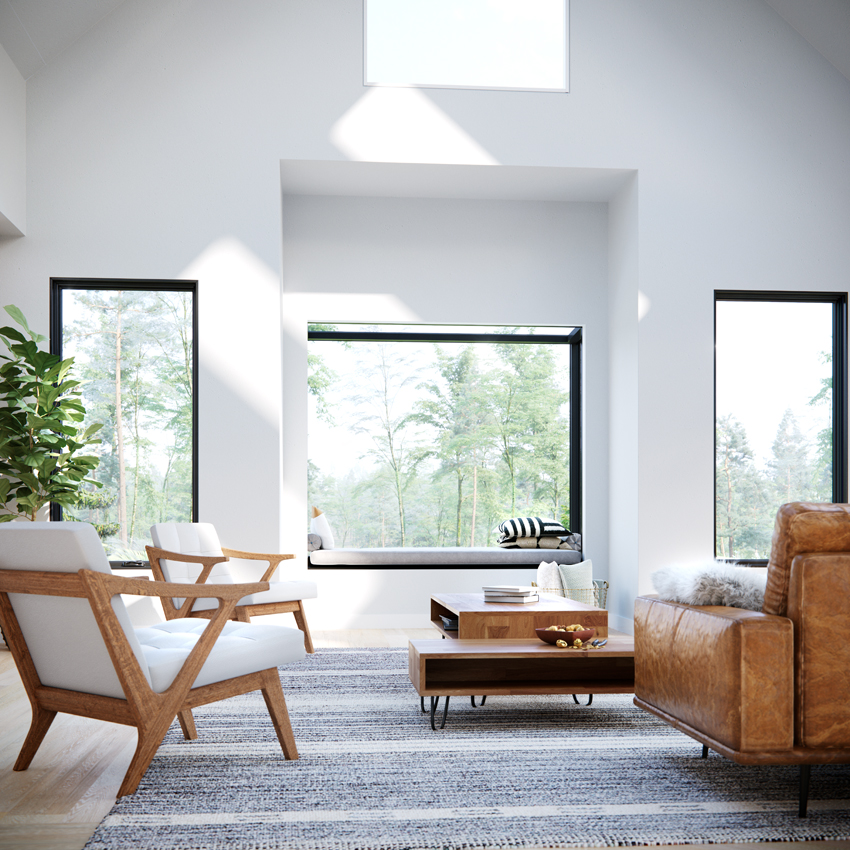
Skylights, windows, open plans, and light surfaces can all help ensure indoor spaces are adequately daylit.
Interior Layout and Partitions
Up until recently, open plans were becoming more popular in both residential and commercial buildings. In homes, this translates into open kitchens and informal dining areas that connect to living rooms with plenty of windows. In commercial buildings, there is a trend toward offices without walls and retail spaces illuminated with natural light.
An interior layout designed for daylighting will ensure that all occupants—not just those located near windows—enjoy the benefits of daylighting. Private offices should be located toward the core of the space, and panels separating workstations should be as low as possible. Glass walls and light-colored surfaces can be used to disperse daylight throughout the room. Interior solid partitions, for example, can drastically cut daylight penetration. Replacing these with glass partitions can help.
Reflectance
The reflectance of interior surfaces, including ceilings, walls, flooring, and even furniture, impacts the distribution of incoming daylight. Highly reflective and light surfaces reflect and distribute light, while darker surfaces absorb daylight. ASHRAE sets minimum reflectance values for interior ceilings, walls, and flooring for various building types. As the most important light-reflecting surface, ceilings should have a reflectance of 80 or more.
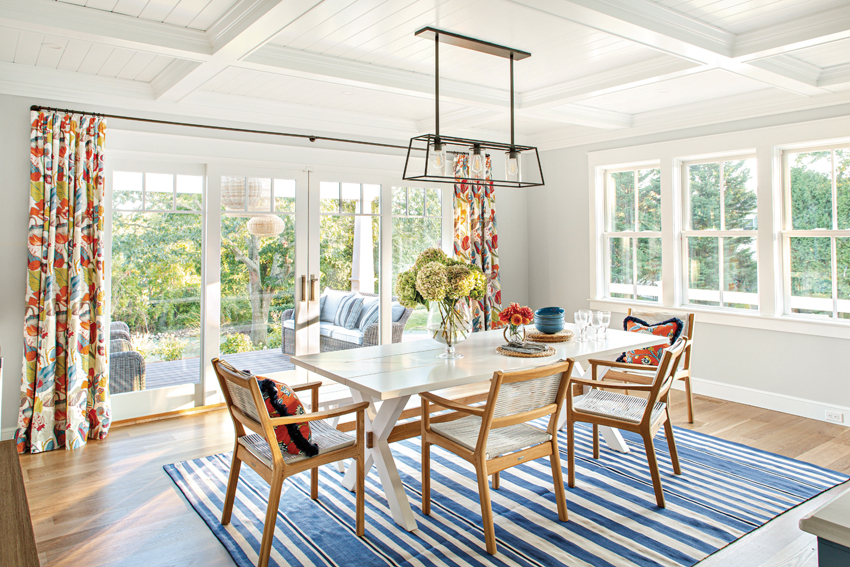
Photo: Anthony Tieuli
High-reflectance ceilings are an effective strategy for increasing the reach of daylight into interior spaces.
Shades and Overhangs
Exterior overhangs are typically used to block the sun during the summer, when its path across the sky is at its highest. Such overhangs allow sunlight to enter the building in winter, when the sun is lower in the sky. Overhangs are fixed elements on the exterior of the building. Horizontal projections work best on south facades, as they block direct sun at high angles. Vertical projections can be useful on east and west facades, blocking the sun early in the morning and late in the afternoon. Overhangs present an opportunity for visually interesting exterior architectural elements in the form of fins, “egg crate” (a pattern of alternating vertical and horizontal projects), and brise soleil.
Interior roller shades, blinds, and screens can be manually operated or automated. They can be part of a building management system, programmed to coordinate with electric light controls. One disadvantage of these devices is that they still allow heat to enter through the window, where it can become trapped between the shading device and the glazing. A good strategy is to combine exterior overhangs with interior shading controls.
Notably, occupants who are using screens and battling glare may opt to close shades. If the shades remain closed even after the glare subsides, the daylighting benefits are not being enjoyed. Similarly, a skylight that automatically closed when its rain sensor detected moisture may have to be “told” to open again.
High-Performance Glazing
While increasing the amount of glazing can increase heating and cooling demand, daylighting can also significantly reduce electric lighting demand. High-performance glass can also be used to help mitigate the loss in energy efficiency.
Keeping building orientation, climate, and daylighting goals in mind, design professionals can choose architectural glass that will help their specific project obtain the most daylighting benefits while controlling glare and solar heat gain. The key terms to remember when specifying these systems include U-factor, solar heat gain coefficient (SHGC), and visual transmittance (VT).
U-factor: A measure of the heat flow through the window due to convection, conduction, and radiation. The higher the U-factor, the more heat is transferred or lost through the window. Low U-factors can help reduce heating and cooling loads.
Solar heat gain coefficient (SHGC): The ratio of the solar heat gain entering the space through the glazing to the incident solar radiation. SHGC is measured on a scale between 0 and 1; the lower the SHGC, the less heat is transmitted. Choose low SHGC when cooling loads are high and a higher SHGC for passive solar heating.
Visible light transmittance (VT): The percentage of visible light entering the space through the glazing system. VT is measured on a scale of 0 to 1; the higher the VT, the more light that is transmitted. Clear glazing has a VT of about 0.90. A high VT is desirable for effective daylighting.
Tints and low-emissivity, or low-e, coatings can impact both VT and U-factors. Typically applied to the glass during manufacture, these coatings limit the transmission of infrared and near-infrared wavelengths and so reduce the emittance of radiant heat.
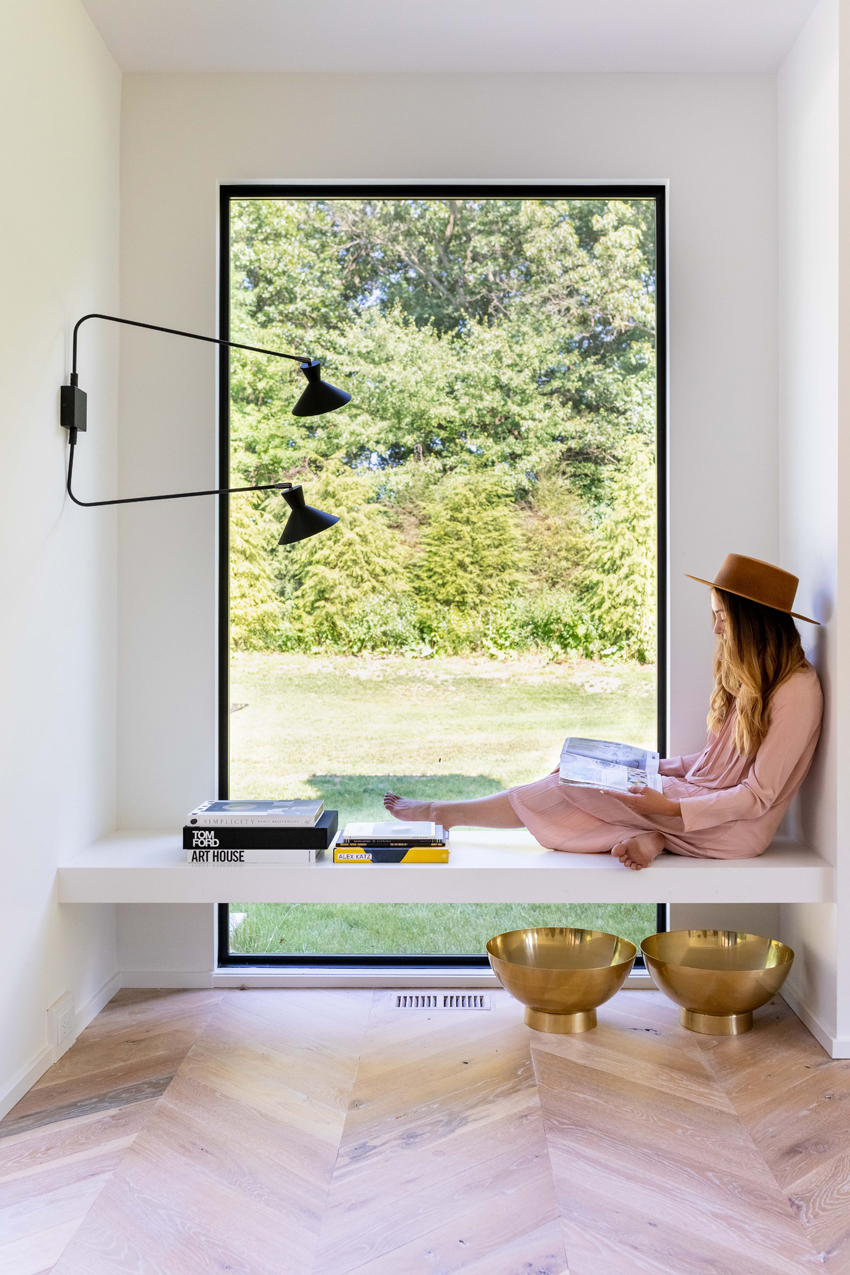
Photo: 22 Waves Creative
High-performance glazing can be specified to minimize the transmission of radiant heat but still let in as much light as possible. Overhangs can help control glare.
The Potential of Tunable Lighting
While daylighting has many benefits, including helping to keep circadian cycles in sync, people often are not exposed to enough of it throughout the day. Sometimes there simply is not enough natural light available, whether because of the design constraints of a building or because of the season or geographic region in which a project is located. Consequently, artificial lighting can play a vital role in supplementing daylight and promoting the well-being of building occupants.
Until recently, much of the research on daylighting has focused on the benefits of daylighting in a number of building types, including retail shops, offices, and health-care settings. Now, a new wave of research is focusing on how exposure to natural light can help regulate the body’s circadian rhythms.
The combination of exposure to high-intensity blue light during the day and minimal exposure to such light at night is key to ensuring circadian cycles stay in sync. Unfortunately, modern life promotes exactly the opposite: too little time outside during the day and too much screen time at night.
While building design using the strategies outlined in the previous section can go a long way to ensuring adequate exposure to natural light, in some cases, natural light may need to be supplemented with artificial lighting to receive these benefits.
Most electric lighting is designed to meet the visual requirements of occupants; however, both higher light levels and shorter wavelengths are required to activate the circadian system.21
So-called tunable lighting can help ensure that building occupants are exposed to enough high-intensity blue light during the day, and that exposure to such light in late afternoon and evening is minimized.
New lighting technologies can possibly enable greater control over both the amount of light and its “spectral characteristics” (i.e., whether light is warm or cool). Both of these qualities can promote circadian processes and health. Increasing interest in how buildings can promote human health is driving the development of these technologies and research that attempts to quantify the benefits in a number of settings, from health care to classrooms.
There are several types of tunable lighting. The simplest, sometimes called “dim to warm,” is available in a color temperature range of 2700–3000 Kelvin (K). These lights are dimmable; as the light dims, it becomes warmer. This type of lighting is a good option for homes and hotel rooms, as light in this color temperature range tends to promote relaxation. Light that becomes “warmer” as it dims simulates natural light as the sun lowers past the horizon and the sky goes dark.22
White-tunable lighting, as the name suggests, allows a user to adjust the color temperature of a light without dimming it. White tuning allows users to change the color of light from warm to neutral to cool in appearance. These products have at least two sets of controllable LEDs, typically including a warm white color (around 2700 K) and another at a cool white color (5000–6500 K). These lights have many potential applications and may be used to create desirable conditions in a classroom or office, mimic light conditions outside, and possibly help support and even re-synchronize circadian rhythms.23
Finally, color tunable systems include at least three LEDs of different colors. These can be “mixed” to create a broad range of white and white-tinted light. Though still being developed, these lights could have especially useful applications in schools and health-care settings.
Biodynamic lighting is a type of lighting in which the illuminance levels and color temperatures are designed to vary throughout the day, mimicking the natural pattern of sunlight.24 Researchers are attempting to evaluate the benefits of this type of lighting, and while the benefits may be challenging to quantify, people are responding positively to biodynamic lighting in these experimental settings.
Research on Biodynamic Lighting
While still in early days, research is yielding some promising insights on the health benefits of biodynamic lighting.
In one study, dementia patients in a psychiatric hospital were exposed to biodynamic lighting that simulated daylight cycles. The lighting was installed in the common room. The results showed a decrease in the amount of daytime napping and in “nighttime wandering,” common in dementia patients. This study has important implications, as dementia is known to disrupt the circadian clock. Older people require more light to stimulate the “master clock” in the SCN; at the same time, they tend to spend little if any time outside.25
Another recent study looked at the possible benefits of tunable LED lighting on energy, lighting quality, and health for residents and caregivers at a residential senior care center in Sacramento, California.
The Sacramento Municipal Utility District (SMUD) installed tunable-white LED lighting to learn if and how it affects the sleep patterns, nighttime safety, and other behaviors of the residents. They also wanted to create better conditions for staff so they could provide a high standard of care.
The LED systems included a combination of spectral tuning and dimming, and they were installed in the residents’ rooms, the adjacent corridor, and the nurse station.
With high-intensity cool light during the day and lower-intensity warm lighting in the evening, this lighting scheme was designed to suppress the production of melatonin from morning to midday, and to prevent the suppression of melatonin production in the evening and at night.
One of the difficulties of this type of research is that the benefits are hard to measure scientifically. However, staff noted several health-related benefits that could have been due—at least in part—to the circadian lighting. For instance, “agitated behaviors” such as yelling and crying decreased following the installation, and one of the residents showed a notable decrease in psychotropic medication. The number of patient falls also decreased after the LED installation, and residents also spent more time in the corridor where the lights had been installed.26
A school district in Texas partnered with the U.S. Department of Energy to study the impact of tunable-white LED lighting systems in two classrooms: a fourth-grade reading and language arts classroom and an eighth-grade science laboratory.
The goals of this lighting system were different than those in the health-care setting. The system allowed teachers to vary the color temperature and intensity across four preset conditions. This enabled teachers to “set the mood” for students, using warmer and dimmer lighting to induce calm and cooler and brighter lighting to encourage alert, focused behavior.
The two teachers who participated in the study reported that they appreciated the ability to tailor the lighting to different classroom needs. They also noted that the lighting and controls allowed students to be engaged in choosing the settings for various classroom activities. Both teachers stated that the lighting system improved the overall learning environment.27
Trends in Glass and Lighting
While windows, skylights, and other strategies focus on bringing available sunlight into spaces, biodynamic lighting represents the next evolution in lighting, with potential applications in many building types, including homes. As we have seen, biodynamic lighting enables lighting systems that mirror natural sunlight conditions to be installed in the built environment; these systems may help to regulate the human body’s natural circadian rhythms.
Another application for this type of lighting is the ability to extend daylight. For example, one manufacturer offers a skylight that can extend daytime hours with supplemental, tunable lighting that helps create the comfortable feeling of daylight anytime.
The lights in this skylight are designed to match natural light throughout the day in color and quality. The lights are tunable from 2200 K (sunset) to 5000 K (noon on a sunny day) and anything in between. Additionally, the LED lights are high CRI lights, so the quality of the light matches the broad spectrum of natural light.
This skylight can extend daytime hours with supplemental, tunable lighting that helps create the comfortable feeling of daylight anytime. This product could be an especially good strategy for northern climates, which experience more severely shortened days in winter. This skylight features the largest daylight opening in its category, maximizing daylighting potential; it is also equipped with motorized roller shades that can be used to control strong sunlight.
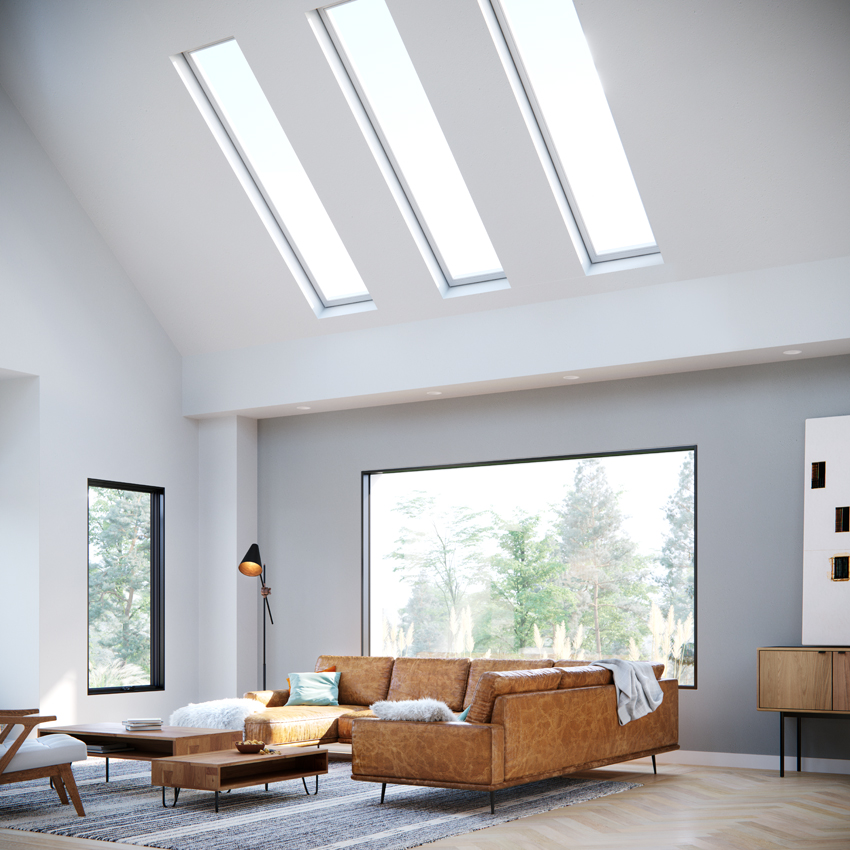
New technology is enabling biodynamic skylights that can mimic the changing color temperature of daylight throughout the day.
Conclusion
Our bodies are governed by circadian rhythms that rely on cues from the natural environment, especially periods of sunlight and darkness. Modern lifestyles can disrupt these important cues, with consequences for sleep, physical, and mental health. Building designers have an important role in promoting health and well-being by implementing good daylighting design in buildings. Good daylighting can help support circadian rhythms while providing many other benefits, reducing reliance on artificial lighting, creating welcoming environments, and promoting connections with the natural world. Biodynamic lighting can supplement daylighting design and may be used to support circadian rhythms, which play a role in so many important physiological processes.
End Notes
1Ruder, Debra Bradley. “Circadian Rhythms and the Brain.” Harvard Mahoney Neuroscience Institute. Web. 6 August 2020.
2Aulinas, Anna. “Physiology of the Pineal Gland and Melatonin.” NCBI. 10 Dec. 2019. Web. 6 August 2020.
3Medic, Goran et al. “Short- and long-term health consequences of sleep disruption.” Nature and Science of Sleep. 2017. Web. 6 August 2020.
4Penckofer, Sue et al. “Vitamin D and Depression: Where is all the Sunshine?” Issues in Mental Health Nursing. 7 May 2010. Web. 6 August 2020.
5“What is Shift Work?” The National Sleep Foundation. Updated 28 July 2020. Web. 6 August 2020.
6“IARC Monographs Meeting 124: Night Shift Work (4–11 June 2019): Questions and Answers.” International Agency of Research on Cancer. World Health Organization. 5 July 2019. Web. 6 August 2020.
7Szkiela, Marta et al. “Night Shift Work—A Risk Factor for Breast Cancer.” International Journal of Environmental Research and Public Health. January 2020. Web. 6 August 2020.
8Jones, Michael E. et al. “Night shift work and risk of breast cancer in women: the Generations Study cohort.” British Journal of Cancer. 29 May 2019. Web. 6 August 2020.
9Garcia-Saenz, Ariadna et al. “Evaluating the Association between Artificial Light-at-Night Exposure and Breast and Prostate Cancer Risk in Spain (MCC-Spain Study).” Environmental Health Perspectives. April 2018. Web. 6 August 2020.
10Ibid.
11Ulrich, R.S. “View through a window may influence recovery from surgery.” Science. 27 April 1984. Web. 6 August 2020.
12Parry, Barbara and Maurer, Eva. “Light treatment for mood disorders.” Dialogues in Clinical Neuroscience. December 2003. Web. 6 August 2020.
13Brandon, Debra H. et al. “Timing for the Introduction of Cycled Light for Extremely Preterm Infants: A Randomized Controlled Trial.” Research in Nursing & Health. August 2017. Web. 6 August 2020.
14Edwards, L. and Torcellini, P. “A Literature Review of the Effects of Natural Light on Building Occupants.” National Renewable Energy Laboratory. July 2002. Web. 6 August 2020.
15Meister, Jeanne E. “The #1 Office Perk? Natural Light.” Harvard Business Review. 3 September 2018. Web. 6 August 2020.
16“Circadian Light.” Sustainable Facilities Tool. General Services Administration. Web. 6 August 2020.
17Service, Robert. “New smart windows darken in the sun—and generate electricity at the same time.” Science. 22 January 2018. Web. 6 August 2020.
18Penny, Janelle. “How Light Shelves Maximize Daylighting.” Buildings. 10 October 2017. Web. 6 August 2020.
19"The Economics of Biophilia.” Terrapin Bright Green. Web. 6 August 2020.
20“Skylights.” Energy Saver. Office of Energy Efficiency & Renewable Energy. U.S. Department of Energy. Web. 6 August 2020.
21“Results Report: Measuring Personal Light Exposures, Health, and Wellbeing Outcomes.” Lighting Research Center. Updated 18 May 2016. Web. 6 August 2020.
22Feit, Justin. “Finding the Right Tunable Lighting System.” Buildings. 3 April 2018. 6 August 2020.
23Ibid.
24Ibid.
25van Lieshout-van Dal, Ellen et al. “Biodynamic lighting effects on the sleep pattern of people with dementia.” Building and Environment. March 2019. Web. 6 August 2020.
26Ibid.
26“SSL Demonstration: Tunable-White Lighting at the ACC Care Center.” Solid-State Lighting. Office of Energy Efficiency & Renewable Energy. U.S. Department of Energy. September 2016. Web. 6 August 2020.
27“Tuning the Light in Classrooms: Evaluating Trial LED Lighting Systems in Three Classrooms at the Carrollton-Farmers Branch Independent School District in Carrollton, TX.” Solid-State Lighting. Office of Energy Efficiency & Renewable Energy. U.S. Department of Energy. September 2017. Web. 6 August 2020.
Juliet Grable is an independent writer and editor focusing on building science, resilient design, and environmental sustainability. She contributes to continuing education courses and publications through Confluence Communications. www.confluencec.com




